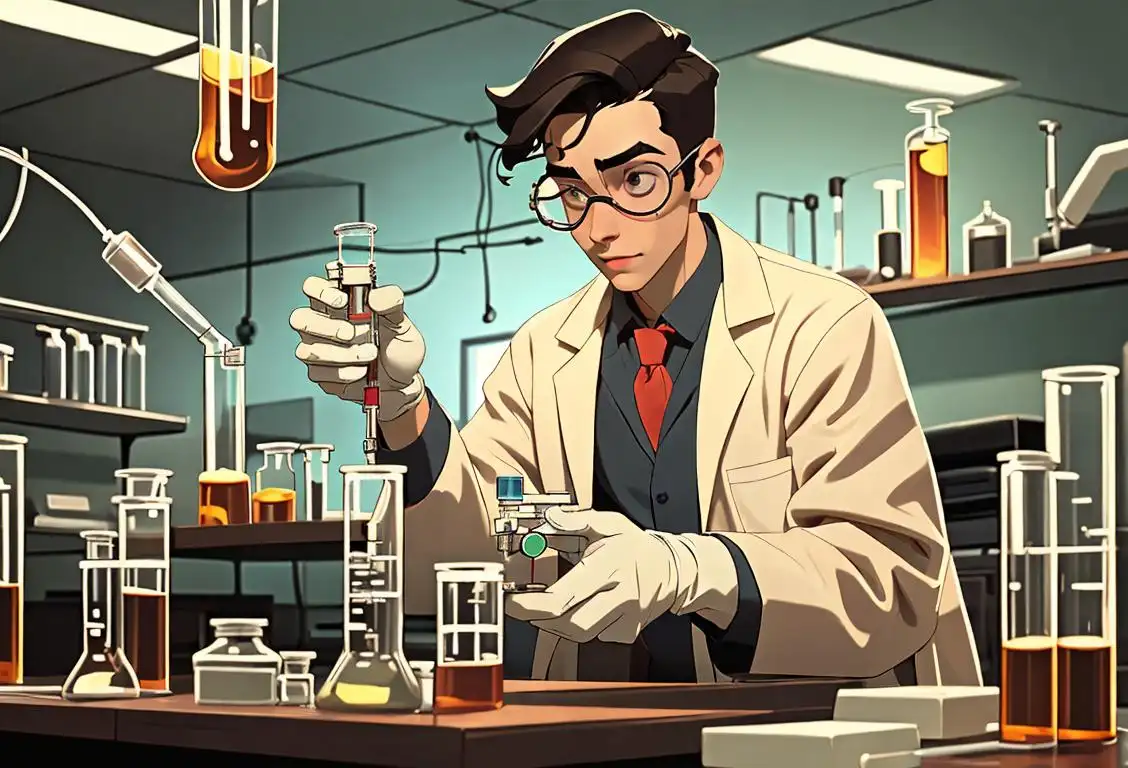National Drug Screening Day

Welcome to the wacky world of National Drug Screening Day! Prepare yourself for a journey into the depths of drug screening history, where bizarre facts and unexpected insights abound. Get ready to have your mind blown and your funny bone tickled, as we dive into the fascinating tale of this quirky holiday.
When is Drug Screening Day?
It's national drug screening day on the 19th April.
The Origins of National Drug Screening Day
Let's travel back in time to the year 2008, when National Drug Screening Day first made its virtual debut. This special day was created to raise awareness about the importance of drug screening in various settings, from workplaces to schools. It serves as a reminder that staying drug-free is essential for a healthy and productive life.
How to Celebrate National Drug Screening Day
This national day is all about promoting drug-free living and encouraging individuals and organizations to implement drug screening programs. Here are a few ways you can join in on the festivities:
- Organize a drug screening event in your community. From schools to workplaces, spreading the importance of drug screening can make a significant impact.
- Spread awareness on social media using the hashtag #DrugScreeningDay. Share informative articles, statistics, or personal stories about the positive effects of drug screening.
- Take a moment to review your own drug screening policies at work or home. Ensure that you have the necessary procedures in place to maintain a drug-free environment.
A Fun Fact about Drug Screening
Did you know that some drug screening methods can detect substances that were consumed several weeks ago? That's right, your body may still be revealing your questionable decisions from the distant past. So, stay clean, and remember that what happens in Vegas may stay in Vegas, but what you put in your body can stick around for a while!
History behind the term 'Drug Screening'
1967
Creation of the term 'drug screening'
The term 'drug screening' was first coined in 1967 by researchers in the field of pharmacology. It referred to a method of analyzing biological samples to detect the presence of drugs or their metabolites. The purpose of drug screening was primarily to identify drug use in individuals and monitor drug levels in medical patients.
1980s
Emergence of drug screening in workplace settings
During the 1980s, drug screening gained popularity in workplace settings as a tool for identifying drug use among employees. Companies recognized the potential impact of drug abuse on employee productivity, safety, and overall performance. Drug screening became an important component of pre-employment assessments and random testing programs, especially in safety-sensitive industries like transportation and manufacturing.
1990s
Expanded applications of drug screening
In the 1990s, drug screening techniques and technologies improved, leading to expanded applications. Drug screening became a vital tool in criminal justice systems, allowing the detection of illicit drug use and aiding in rehabilitation efforts. It also became an essential part of drug treatment programs, enabling healthcare professionals to monitor patients' adherence to medication regimens and identify potential substance abuse issues.
2000s
Advancements in drug screening technology
The 2000s witnessed significant advancements in drug screening technology, making the process faster, more accurate, and less invasive. Traditional urine testing was complemented with saliva, hair, and sweat analysis, providing alternative methods for drug detection. This allowed for a broader range of testing scenarios, such as on-site screening and remote monitoring.
Present
Integration of drug screening in various sectors
Today, drug screening has become an integral part of various sectors, including employment, sports, healthcare, and law enforcement. It serves as a crucial tool for maintaining safety, preventing drug-related incidents, and ensuring fair competition. As technology continues to advance, drug screening methods are likely to evolve further, offering even more accurate and efficient means of drug detection.
Did you know?
Did you know that some drug screening methods can detect substances that were consumed several weeks ago?Tagged
awareness funFirst identified
19th April 2016Most mentioned on
19th April 2016Total mentions
9Other days
Nurses Day
Former Prisoner Of War Recognition Day
Press Day
Handloom Day
Heroes Day
Memorial Day
Dance Day
Bestfriends Day
Liberation Day
Love Your Pet Day









